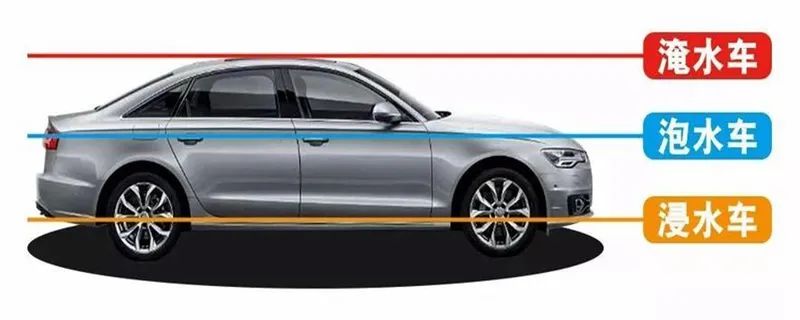Safety Tips for Rainy Season!
REVO offers top-notch repair solutions to ensure your safety on the road. Keep this guide handy for safe travel during the rainy season
During heavy rains and floods, the risk of vehicles getting submerged or waterlogged increases significantly. For vehicle owners who have driven through deep water, it might seem like there's no issue if no immediate problems are apparent. However, even if the vehicle didn’t stall or show faults, a thorough inspection is essential.
REVO has compiled a "Safety Tips for Rainy Season" for your reference.

Headlights
Headlights are critical for safe driving in rainy and foggy conditions and at night. Poorly sealed headlight covers can allow water to enter during submersion, causing internal fogging and reducing light output.
Electrical Systems
Low-lying wiring harness connectors can get soaked during submersion. Damp electrical systems can cause sparks or even fires when the vehicle is started. If the engine wiring harness connectors are wet, dry them immediately with a heat gun and ensure the insulation is intact. Use paper towels to dry circuits carefully to avoid electric shock.
Chassis
Rainwater on roads contains mud, sand, and debris. During submersion, the chassis can get coated with this dirty water, leading to rust if not cleaned. Leaves and plastic bags can also wrap around bearings and suspension components, creating hazards. Thoroughly clean the chassis at a car wash, and if possible, apply an anti-rust treatment to improve corrosion resistance.
Engine Oil
Deep water can allow water to enter the engine lubrication system through poorly sealed components, contaminating the oil. Check the oil cap and dipstick for water contamination; if the oil appears milky, it indicates water contamination.
Engine
Even if the engine doesn’t stall during submersion, low air intakes can allow water to enter through the grille. Moisture can cause electrical short circuits or water ingress into cylinders later. Continuing to drive after submersion can bend connecting rods and damage engine components. Auxiliary systems (belts, tensioners, idler pulleys) are also prone to damage. Water or mud can cause tensioner grease to fail, and sand entering the multi-rib belt can cause noise and accelerated wear.
REVO offers high-quality repair solutions to ensure safety. Our products are rigorously tested for durability and reliability and are trusted by global automakers. REVO specializes in timing system solutions, meeting or exceeding OEM specifications. We recommend replacing the entire timing system to ensure compatibility and achieve optimal performance and longevity.

Safety Precautions for Driving in Thunderstorms
1. Ensure Visibility: Turn on windshield wipers promptly.
2. Brake Slowly: Prevent wheel skidding.
3. Drive Slowly and Maintain Distance: Avoid driving through water with large vehicles to prevent splashing that could cause the engine to stall.
4. Park Carefully: Choose high places, avoiding areas prone to flooding and under trees.
5. Turn Off Engine After Submersion: Do not restart the vehicle. Prioritize personal safety and move to a safe location.
Last Few Words
After vehicle submersion, perform comprehensive inspections and repairs to ensure safety. REVO offers top-notch repair solutions to ensure your safety on the road. Keep this guide handy for safe travel during the rainy season.
Related news
2024-06-28
Tel: +86-(0)571-87565261 Email: marketing@revoauto.com Add: No.50, Haoshan Road, Pingyao, Yuhang District, Hangzhou, Zhejiang, China© 2023 REVO. All rights reserved. Privacy
Tel: +86-(0)571-87565261
Email: marketing@revoauto.com
Add: No.50, Haoshan Road, Pingyao, Yuhang District, Hangzhou, Zhejiang, China
© 2023 REVO. All rights reserved. Privacy





